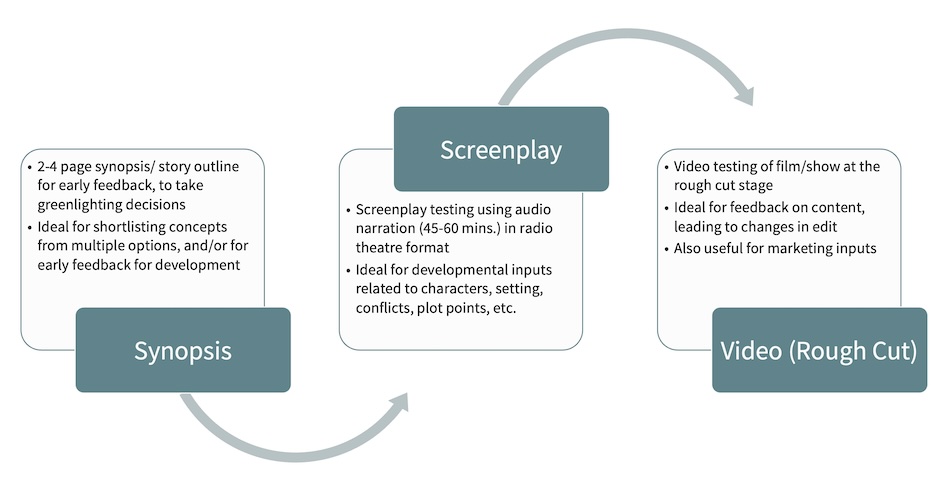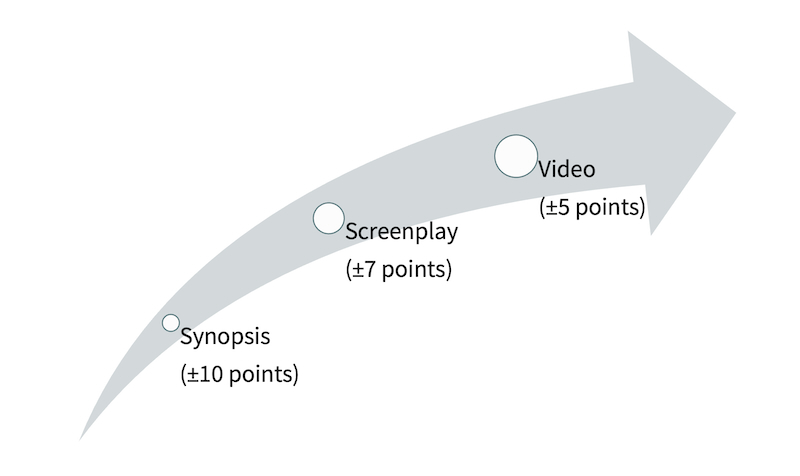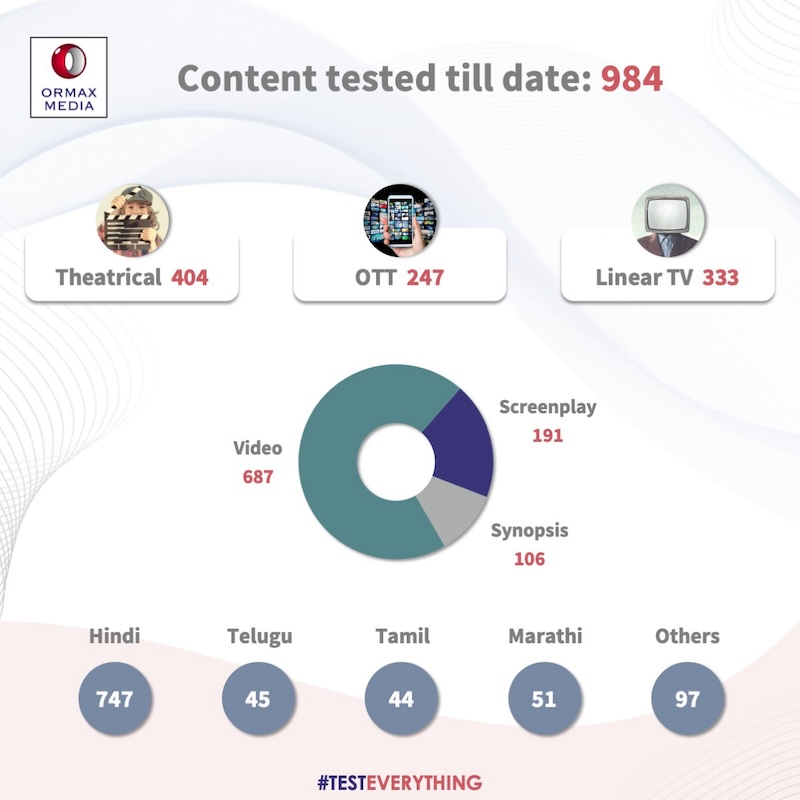


By Our Insights Desk
Content Testing forms a significant part of Ormax Media’s work. In our endeavor to adapt our content testing offerings to evolving market needs, we regularly update our Content Testing tools. A growing need, in this context, is Content Testing at the synopsis stage.
We have tested content at screenplay and video stages extensively. For fiction content on linear television, screenplay testing doesn’t work, given the extreme long-form nature of content, and “concept” (10-20 mins. audio narration of the longer story arc; a loose equivalent of “synopsis”) is often tested.
While we have tested concepts and synopses for theatrical films and web-series too, ranging from sketchy one-paragraph concepts to fleshed-out outlines running into 10 pages, testing at the synopsis stage was not positioned by us as a primary offering for theatrical and OTT categories.
However, given the uncertainties in the post-pandemic era, we find more and more producers, studios and platforms wanting to get an early read on the consumer verdict on their idea, before they decide to invest further in developing it. Understandably, being an early-stage process, Synopsis (or Concept) Testing is also lower on logistics and costs, compared to screenplay or video-based testing. But this stage of testing is particularly relevant when there are ‘choices’ to be made, e.g., 'which two of these five ideas to develop further?'
Hence, all our content testing tools, namely Ormax Moviescope (theatrical films), Ormax Stream Test (streaming content) and Ormax True Value (linear television content) are now designed to handle projects at any of the three stages of testing.

Across all three stages, the key metric at the center of a Content Testing report is Ormax Power Rating (OPR), a measure of content likeability and engagement, and hence of advocacy and sustained performance. OPR is measured for all major properties, across domains and languages, post their release. Test research predicts this post-launch OPR, in effect predicting the eventual business outcomes of the test show/film, subject to marketing assumptions.
The trade-off between the three stages of testing is best explained by the improvement in OPR accuracy (Test vs. Actual). OPR is a measure on a 0-100 scale. The graphic below captures the difference of test and actual OPRs for at least 90% testing projects at each stage. Evidently, the closer the research stimulus (what the audiences hear and/or see) is to the final product, lesser is the likely gap between test and actual outcomes. But early-stage testing can help in saving significant time and development costs, which is why the trade-off between different stages of testing is an intriguing one.

We are nearing the 1,000-mark on the number of Content Testing projects we have executed till date, over almost 16 years now. This is our weekly update posted on social media on July 5, 2024.

While Hollywood has been testing content for several decades now, we are proud of the unique approaches we have been able to bring to content testing in a diverse and complex market like India in a short period of time. For more on our Content Testing work, you can watch this podcast, in which our Founder-CEO Shailesh Kapoor and Kevin Goetz, Founder-CEO of Screen Engine/ ASI, speak to media journalist Vanita Kohli-Khandekar on audience testing approaches in India and the US, respectively.

The India Box Office Report: November 2025
November 2025 was an underwhelming month at the India Box Office, recording only ₹587 Cr in gross collections. However, the year stays on course to become the highest-grossing year of all time

Ormax Cinematix's FBO: Accuracy update (November 2025)
This edition of our monthly blog summarises Ormax Cinematix's box office forecasts (FBO) for all major November 2025 releases vis-à-vis their actual box-office openings

From CTV to Micro Dramas: India's fascinating OTT spectrum
The simultaneous rise of Connected TV and Micro Drama audiences in India over the last year highlights how the Indian OTT market is expanding at both the premium and the mass ends simultaneously
Subscribe to stay updated with our latest insights
We use cookies to improve your experience on this site. To find out more, read our Privacy Policy